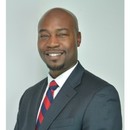Getting Black students more involved in STEM programs is a critical step in narrowing the achievement gap — along with disparities in career readiness and salaries — that has been in place for decades, according to data from the National Center for Education Statistics.
A 2021 Pew Research Center report notes that Black students earned only 7 percent of STEM bachelor’s degrees in 2018, and a post-pandemic analysis by McKinsey found that in math, “students in majority-Black schools are now 12 months behind their peers in majority-white schools.”
DeLean Tolbert Smith, an assistant professor in the Department of Industrial and Manufacturing Systems Engineering at the University of Michigan-Dearborn, experienced this gap firsthand. As an undergraduate engineering student at UM-Dearborn, she didn’t see as many Black colleagues as she had hoped.
“There are issues such as systemic racism that lead to inequities in education,” she says. “In my own research, I realized the key to educational success is engaging families. Schools need to really understand the families they serve and develop programming that aligns with their needs, values and everyday practices.”
Minecraft Lab Brings Excitement to Math, Science and Coding
Initially, Ebri — who is also a doctoral student — didn’t consider herself a gamer, but when she had the opportunity to lead the Minecraft lab at DCPS, she took a chance. She even switched her doctoral dissertation topic to game-based learning.
She wants teachers to know that gaming can change students’ lives.“Every time a group comes in, they’re excited to learn, and I’m excited to teach,” she says.
Nadine Ebri, a specialist with the technology innovation department at Duval County (Fla.) Public Schools, runs the district’s Minecraft lab. Video by Ryan Wendler
Conceived and designed by district CIO Jim Culbert, the lab is outfitted with 30 Lenovo Legion gaming PCs. “They have a little more power to them. Even the mouse lights up with neon lights,” says Holly Lanham, director of technology innovation for DCPS. “It’s completely immersive, from music to sound. When kids come in, they feel like they’re in another world.”
Two large monitors mounted on the walls are used to model and teach. Instructors use the LanSchool learning management software to remotely manage student PCs during lessons. Within Minecraft, lessons include Next Generation Science Standards-aligned math, science and coding (both block-based and Python). Each year, about 1,000 students from across the district visit the lab on field trips. Ebri, Lanham and district leaders plan to expand the program to reach more students.
RELATED: Mobile STEM labs bring science, technology, engineering and math lessons to students.
When slots open for field trips, “they fill up in minutes,” says Lanham. The district intends to open another lab and allocate resources for additional professional development. Feedback from students is overwhelmingly positive. Additionally, Ebri says students are so excited to learn that they independently choose to challenge themselves with difficult tasks or ask her for a pencil and paper to work out a complex problem.
“After this, they can go to a DCPS computer science–focused high school, where they can get credentials and certifications before they even graduate.”
West Philadelphia School Students Repair Chromebooks
At the School District of Philadelphia, where 52 percent of the nearly 200,000-student population is Black, a multitude of STEM programs serve students in every grade.
One of the most notable is at West Philadelphia High School. Career and Technical Education Instructor Marie Wilkins-Walker developed a Chromebook repair shop in her class, and CTE students now fix up to 60 Chromebooks throughout the school district each week.
When the school issued one-to-one devices during the pandemic, her students began making minor repairs on Chromebooks throughout the school. Wilkins-Walker met with SDP CIO Melanie Harris to discuss their achievements.
“When I found out the CTE teacher wanted to make sure her students had opportunities in the world of technology, I reached out,” Harris says. “Marie and her students got the ball rolling. I helped remove barriers. The program started out with small projects here and there, like getting a network jack fixed, and has really grown since then.”
MORE ON EDTECH: Districts partner with businesses to train tomorrow's IT workforce.
Harris also worked closely with Wilkins-Walker to bring in district technicians to teach the students technical skills as well as soft skills — showing them, by example, what professionalism and a workday look like.
“The techs are wonderful, and they are graduates of the district. They’re not much older than the students,” which makes them instant role models, says Wilkins-Walker.
Some students expanded their skill sets by creating TikTok videos about Chromebook care and repair. And last summer, others participated in a district-sponsored, paid internship to repair Chromebooks and create resumes to showcase their experience.
Wilkins-Walker says reaching out to students is key when starting a program like this.
“You’d be surprised at what they have and what they know,” she says. “It’s empowering.”
Baltimore City Public Schools Prep Students for Cybersecurity Careers
Like SDP, Baltimore City Public Schools offers a wide range of programs designed to increase student exposure to STEM subjects and careers.
But this didn’t happen by accident. Kumasi Vines, the district’s director of career readiness, led a team that interviewed hundreds of parents, students and community members on how to best prepare students for high-skill, high-wage jobs. The result was a long-term strategic plan focused on building CTE programs.
The interview process also revealed that businesses need more cybersecurity professionals, which led Vines to reconfigure some CTE programs.
Starting in the 2023-2024 school year, students will be able to learn about cybersecurity through coursework from Cisco.
“We have been offering the Cisco Networking Academy courses in eight schools, but we are transitioning toward cybersecurity,” says Vines. “If all goes well, students will graduate with a Cisco Cybersecurity certification and a diploma, which they can take to any employer.”
A major component of Vines’ strategy is to partner with various advisory committees and organizations that have members students can relate to.











